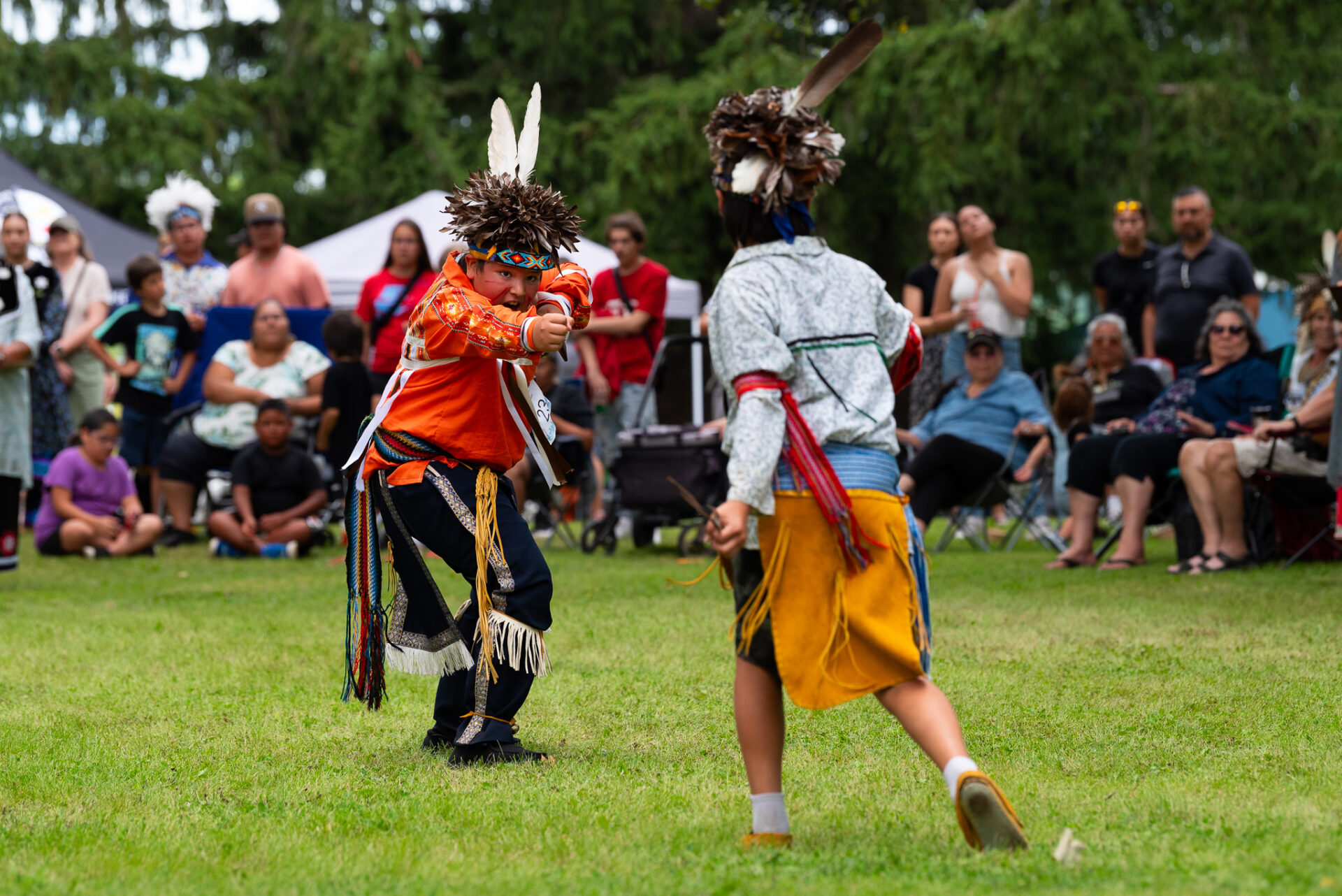Despite the early morning rain, hundreds of residents and out-of-town visitors attended the Woodland Cultural Centre’s Smoke Dance competition on Saturday, August 17, 2024.
While the organization has been hosting the event throughout the last 50 years, this past weekend marked the second annual competition since the COVID-19 pandemic.
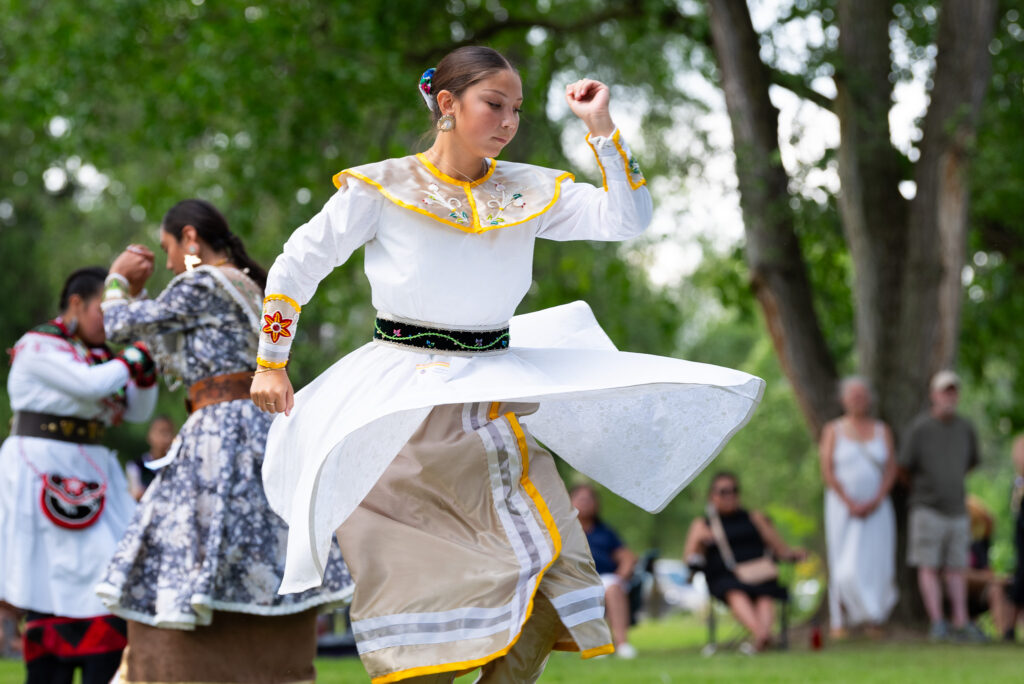
Heather George, Executive Director of the Woodland Cultural Centre, said that the Smoke Dance, while performed these days by Haudenosaunee people, is said to have originated from the Osage Nation.
“Traditionally a Smoke Dance was a war dance that was done by men and the name for it was ‘Wasa’za’ which originally came from the Osage Nation,” she said. “I guess the Haudenosaunee people adopted that form of dance from them long ago with the promise that we would care for it and continue it going forward. It’s really cool because now we sometimes have folks from Osage Nation that actually come up to Brantford and dance with us, and it’s one of those ways that we can see how different Indigenous nations were connected as well. It’s now used more like a rain dance done by both men and women in ceremony and to honour the Thunderers, our grandfathers.”
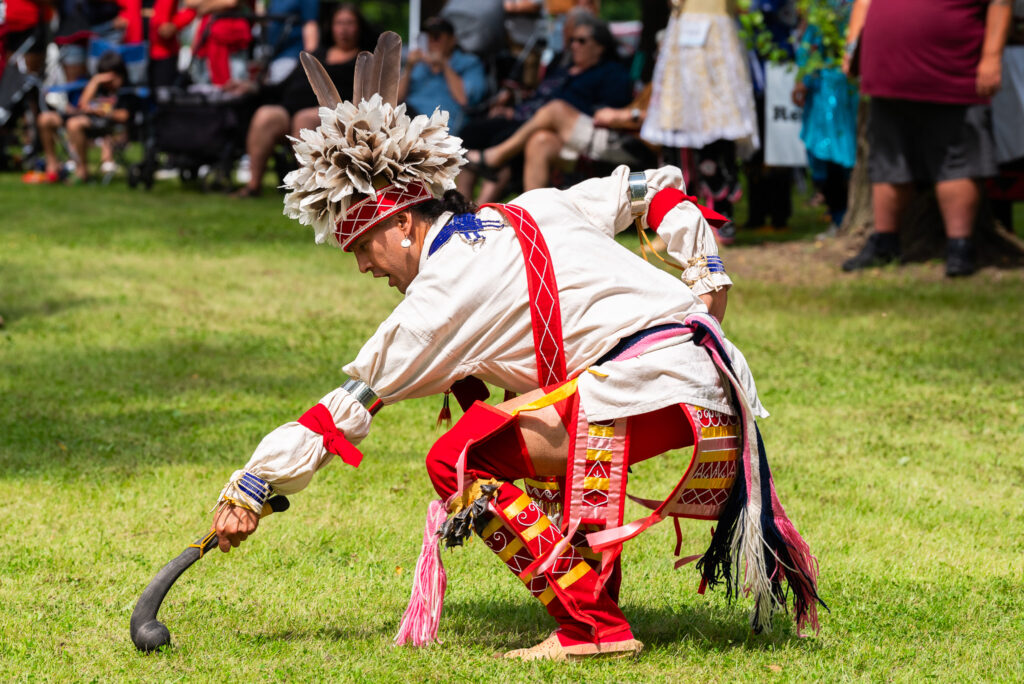
While there are many dance styles among Indigenous people, the Smoke Dance is different from those you may see at Pow Wow like the Fancy, Jingle, Traditional or Grass dances.
“The Smoke Dance is kind of like our rain dance and actually, at one point there were a lot of Pow Wows that didn’t want to feature the Smoke Dance because they were worried it would bring the rain,” said Krista Miller, the Language and Programming Outreach Coordinator for the Woodland Cultural Centre. “The competition today is really about just enjoying this style of dancing because you can see when they move their feet, they’re trying to keep up with the tempo and they’ll throw in a different move that will totally surprise you. These dancers are just incredible, they come up with new moves all the time and I’m always just in awe, especially when they pick up the pace.”
During the event, 15 marketplace vendors were set up to sell their wares. From jewellery to keychains, dream catchers and more, there were plenty of opportunities to support the local artists or visit one of the various information booths on site.
Over on the front lawn, 64 dancers eagerly awaited the chance to display their intricate choreography and their colourful regalia.
Levi Skye, MC for the event, welcomed both the dancers and visitors of all ages to partake in a social dance before Blayze Longboat, lead singer for the event, got the competition started.
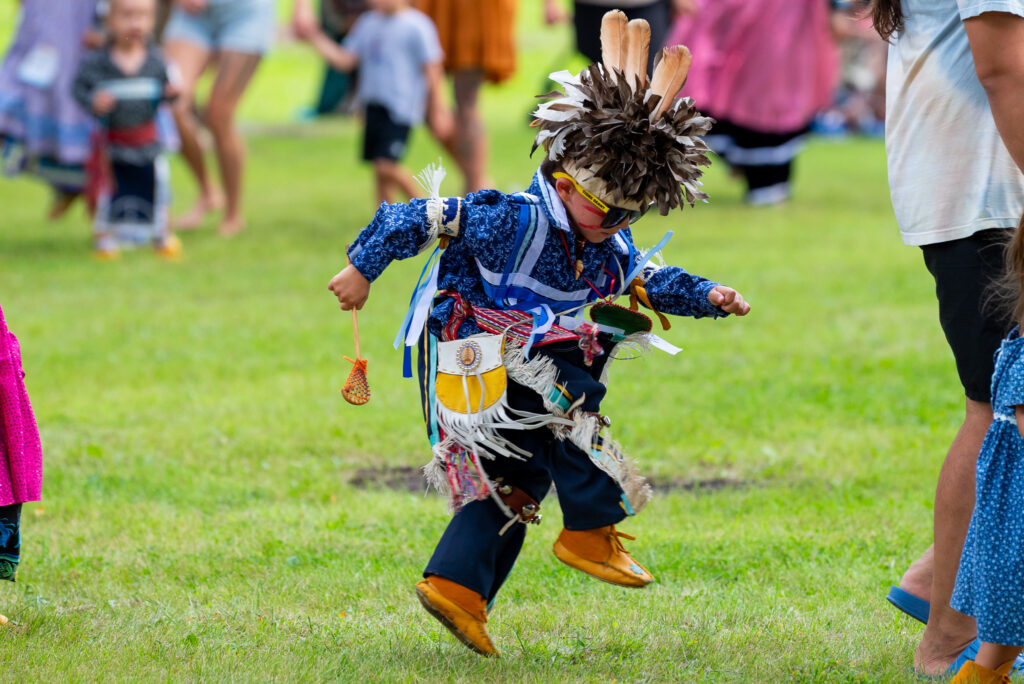
Throughout the afternoon, dancers competed in five different age groups including tiny tot (five years old and under), junior (six to 12 years old), teen (13 to 17 years old), adults (18 to 44 years old) and golden age (45-plus). All ages were eligible to win a cash prize and even the youngsters went home with $5.00.
While there were many close calls resulting in several tie breakers, judges were able to narrow down and award the first, second and third place winners of each age category.
After the competition was wrapped, several youngsters in the junior and teen categories took the opportunity to participate in the switch dance competition.
The dancers were all smiles as they switched regalia with their sisters, brothers, cousins and friends for a chance to better understand each other’s dance styles.
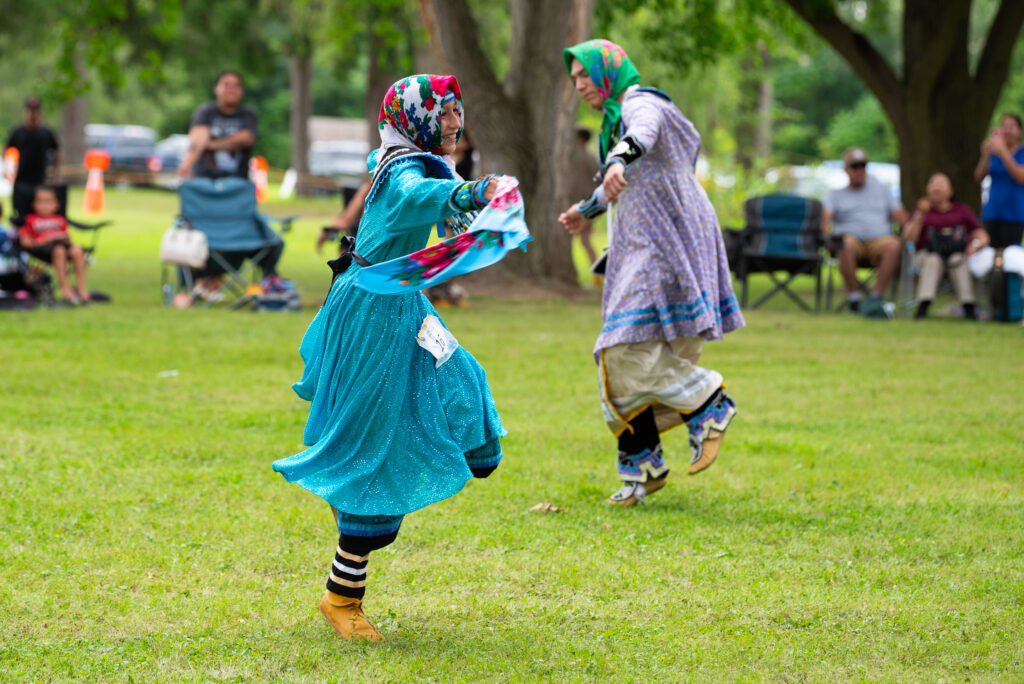
Ric Langlois, one of the many dancers who participated in the competition over the weekend, said that his favourite part of the event was seeing people of all ages learning more about Indigenous cultures and history.
“It’s not so much about the competition but I like dancing like this because it really gives the kids, and the people in general, the opportunity to come out and learn more,” he said. “If you aren’t learning, you have no idea what we’re up against so I really value the education because there were a lot of years we weren’t even allowed to do this.”
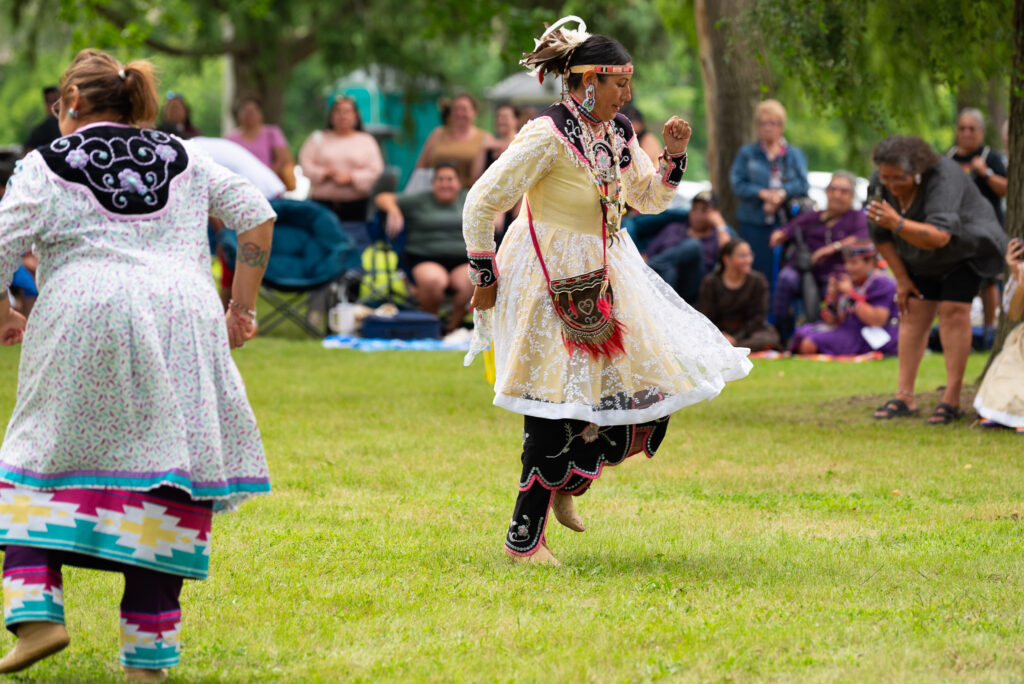
Miller said that while the best part of the event is the dancing, it’s also hearing the crowd and how they react.
“Sometimes I don’t get to see all of the dances so my favourite part is really hearing the crowd’s reaction,” she said. “I also love trying to catch when the dancers are out of breath because you just know that means they’ve really given their all into their style of dance.”
She added that having the competition take place on the grounds of the former Mohawk Institute Residential School is a testament to the resiliency of Indigenous people.
“We’re really trying to put back what they took away and we’re doing it loud and proud, you know?” she said. “At Woodland, and especially in my department, we’re really trying to show the resiliency of it all and we’re trying to show that this is a safe place for people to come, ask questions and tap into resources.”
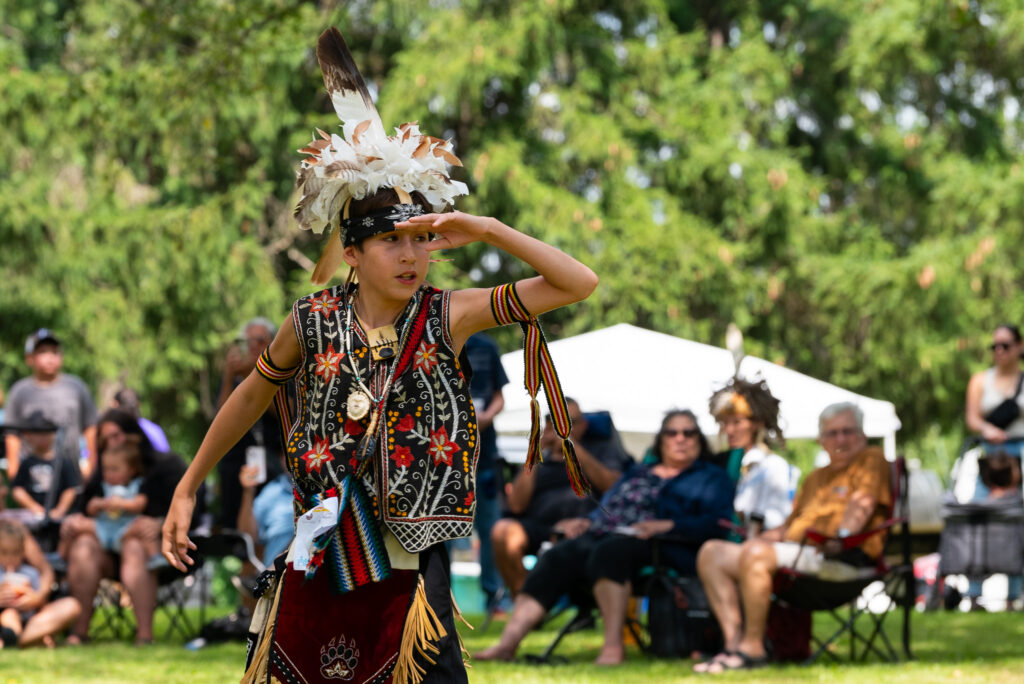
Kimberly De Jong’s reporting is funded by the Canadian government through its Local Journalism Initiative.The funding allows her to report rural and agricultural stories from Blandford-Blenheim and Brant County. Reach her at kimberly.dejong@brantbeacon.ca.
